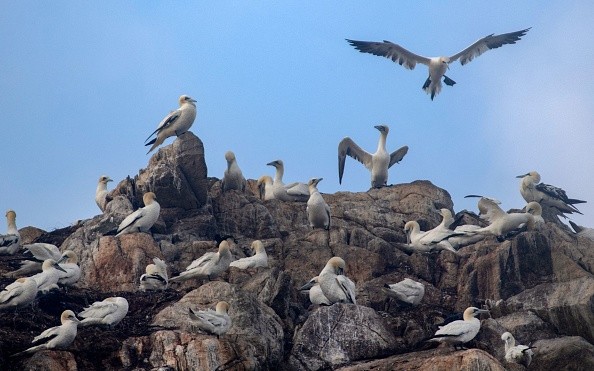A recent report showed how northern gannets on the Quebec isle thrived in populations despite the threat of climate change and the warming of oceans.
Climate change and human-caused activities have been major concerns because of the impact on oceans and the rapid warming of sea temperatures.

According to a report, climate change could threaten seabirds which are forced to travel in far areas to find food and migrate due to the threat of extreme heatwaves. Marine heatwaves could have catastrophic effects on marine life and seabirds, disrupting the food web.
The report published in the University of Washington added that a lower chance of reproductive success among fish-eating seabirds was found. The effect of climate change and human-caused activities, including overfishing, could impact the species of seabird population.
Gannets on the Quebec Isle
A recent report showed how the tenacious gannets on Quebec's Bonaventure Island lived and repopulated despite the threat of climate change, adding over 100,000 northern gannets in the region.
The main threats or challenges that the northern gannets have to overcome are rising sea temperatures, storms, pollution, low abundance of fish and avian flu threat.
The report revealed that warming of sea temperatures, climate change and supercharged weather events contributed to the decline of sea bird populations, showing a 70% decline in population.
Moreover, National Geographic explained that gannets are also called daring drivers or champion drivers in locating and catching prey on oceans. They move quickly and catch the fish inside their throats.
On the other hand, the report added that the northern gannets fly effortlessly, soaring in the sky, and catch for fish, sometimes called a white missile.
The view of how the northern gannets flock and fly in groups is remarkable. Gannet researcher Magella Guillemette explained that the sight was amazing. Guillemette is also from the University of Quebec in Rimouski.
The report added the area is accessible to biologists, conservationists and visitors wanting to see the amazing and tenacious gannets.
Gannet population in the Bonaventure is a habitat or home to a thriving colony of gannets.
Impact of climate change
The report noted that they have yet to assess the full-scale impact of climate change on the gannet population. However, the report added that the warming of sea temperatures and overfishing could account for gannets' challenges.
Gannets deal with the threat of overfishing to find food for their chicks. The report explained that gannets have to travel (About 300 miles) farther, which is double the distance before.
Furthermore, gannets work hard to feed their chicks and sustain their lives. Gannet Research Guillemette explained that research showed the correlation between fish mackerel and Gannets' chicks, noting that the absence or low abundance of fish could affect the chick's population.
The research published by the University of Washington said that seabirds travel farther distances for food. The location where they raise their chicks is also considered in how far they travel.
The food diet that seabirds provide to their young or chicks is important for reproductive success.
Related Article: Sunflower Sea Stars Suffer from Population Decline; Scientists Call for Urgent Help in Species Conservation
For more similar stories, don't forget to follow Nature World News.
© 2025 NatureWorldNews.com All rights reserved. Do not reproduce without permission.





